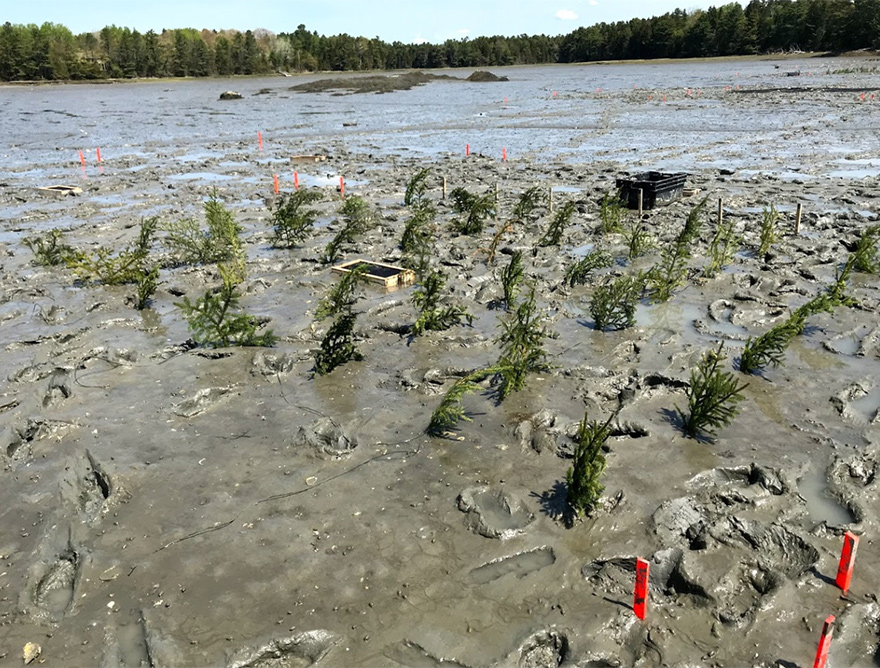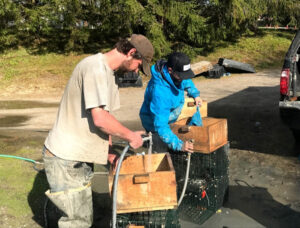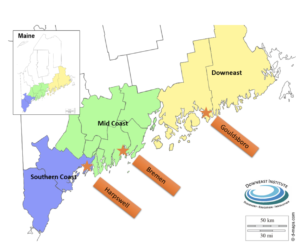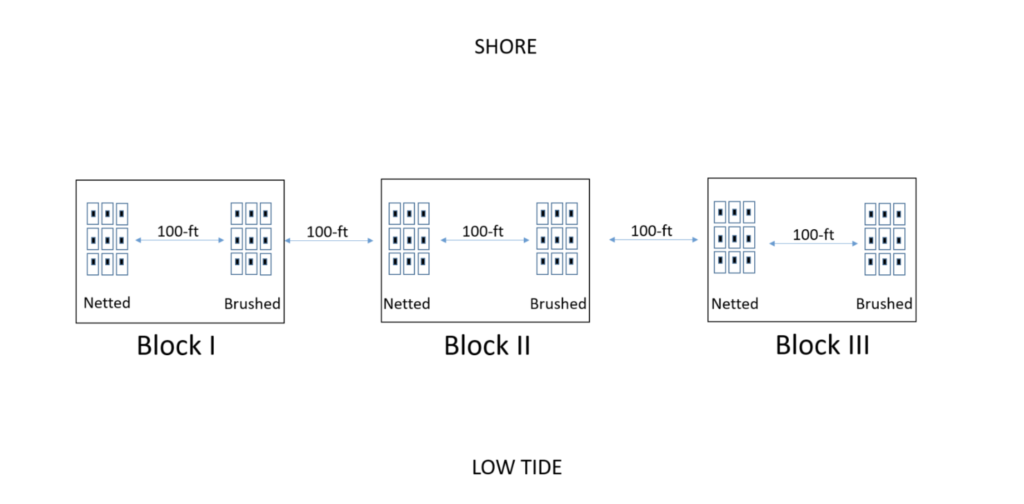
Enhancing clam recruitment along the Maine coast

by Abigail Muscat
View related research project: Examining the efficacy of methods to enhance soft-shell clam recruitment along the Maine coast
Scientists at the Downeast Institute, led by Dr. Brian Beal, have been studying whether “brushing” is a viable option for increasing soft-shell clam populations along the Maine coast. This research aims to protect and restore the coastal ecosystem, enhance the ability of shellfish management strategies to adapt to various ecological changes, and inform the public of issues that affect Maine’s coastal regions and industries.
The soft-shell clam fishery has been important throughout Maine’s history, but over the past decade clam landings have declined substantially with 2017 being the lowest year for the industry in comparison to the past eight decades. The Downeast Institute’s previous research determined that this is the result of warming water temperatures and predation, particularly by invasive green crabs.
Clams have both a larval stage and benthic (bottom) stage. Once this benthic stage is reached, and the animal can be observed, it is considered a “recruit”. Soft-shell clams are managed at the municipal level by Shellfish Committees, who rely on the numbers of recruits and their survival in order to properly manage the fishery. One method used by Shellfish Committees that is believed to enhance recruitment is brushing. Brushing involves inserting various types of tree boughs (typically fir, spruce, and/or birch) into the intertidal sediments. It is thought that adding brush to the mudflats encourages soft-shell clam settlement by lessening the impact of wind and tidal currents and creating eddies (circular water movement). Though brushing has long been used by municipal shellfish programs along the coast, its efficacy has never been measured.

Three locations representing the entirety of Maine’s coastal regions were chosen for this study: Gouldsboro (Downeast), Bremen (Midcoast), and Harpswell (Southwest). With the help of local clammers and community members, scientists installed an experiment consisting of three sets of brushed plots and three sets of netted plots in the mid-intertidal zone of each location. The netting strategy is used to aid clam survival by deterring predators. Around each plot of brush or netting there are eight plots, each with a box in the middle that measures clam recruitment . The box is used to capture settling clams and protect them from predators, which allows the clams to grow. These boxes give scientists an opportunity to measure the amount of recruitment that occurred in specific locations during the clam growing season. In order to understand the effectiveness of both the brushing and netting methods, the number of clams found in the recruitment boxes will be compared to the number of clams found in the unprotected areas of the plots.
In May of 2019, researchers determined the baseline concentration and size of clams in each area of deployment by collecting and sieving 6-inch core samples of benthic sediment. The results of this baseline study revealed that the average density of clams declines the further south the location. In the Gouldsboro flats, clams were found in about 50% of the cores, in Bremen only 26% of the cores had clams, and in Harpswell just 13% of the cores contained clams.

The scientists will be going out at the end of the clam growing season (October/beginning of November) to collect the recruitment boxes and more core samples. The cores and the contents of the recruitment boxes will be processed using a 1 mm (~1/25 inch) mesh sieve. All of the soft-shell clams found in the samples will be counted and measured in order to determine whether the presence of brush increases settlement and survival. The results from the brushed plots will be compared to the netted plots in order to determine the effectiveness of both methods. The information gathered will be given to Shellfish Committees, as well as other state and municipal shellfish managers in order to inform the management of the fishery.
